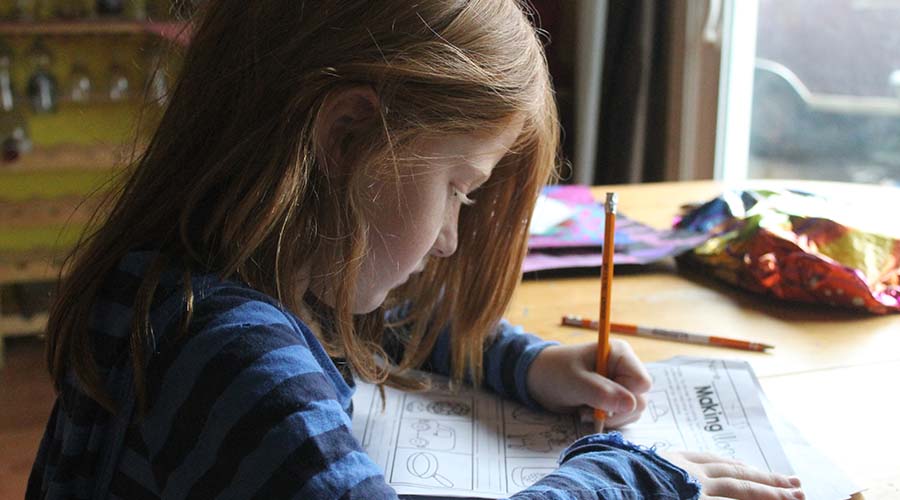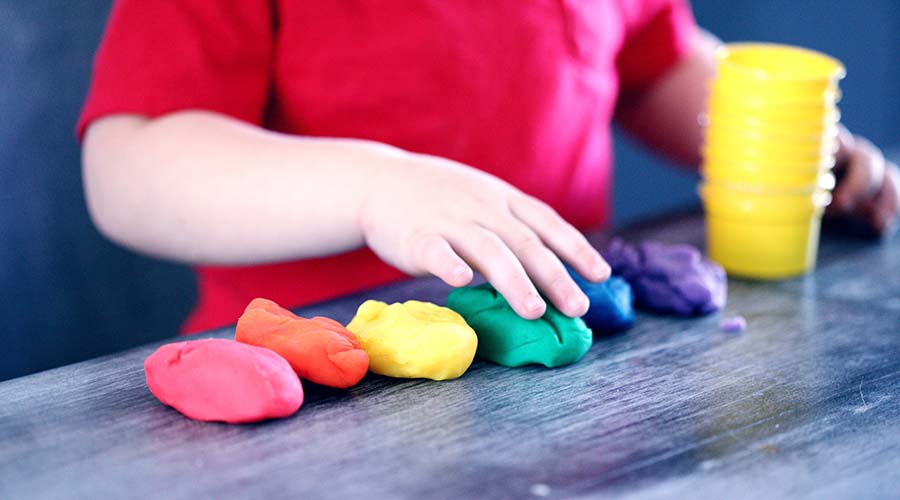settings
children
With Famly since
Your daily hustle and bustle probably means doing 8 different things at once. Maybe you’re hunting under cupboards for glittery welly boots while simultaneously consoling a crying child, all while thinking about how many carrot sticks you need for this morning’s snacks.
It’s busy to say the least! And in amongst all that, staying reflective about your practice might not always be top of your mind. But staying aware of trends in children’s learning, and reflecting on your own practice, is arguably one of the most important things you can do to help the little ones thrive.
We’ve already done a piece on staying critical in an online world and how to keep your critical cap on when you’re on Pinterest or Youtube, but what about staying aware and critical within the four walls of your setting?
After two years of pandemic-related disruption, the way children are developing has changed slightly. And with the panic, madness and uncertainty of a global pandemic, it’s no wonder! None of us have ever experienced growing up in a pandemic, and this generation’s toddlers might need a bit of a different approach.
Let’s dive into why it might be time to swim against the tide in your own setting, how to get staff on board, and why everything comes back to putting the unique child at the heart of your practice.

The lockdown children
It’s no secret that the pandemic has affected children’s development as well as their mental health. But this generation’s toddlers have had a turbulent learning journey too.
Think about the countless lockdowns. Families working from home. Months of mask wearing. Antibacterial hand gel crazes. Constant shifts in nursery schedules and staff members. It’s completely understandable that children may be learning and communicating a little differently than they would’ve done two years ago.
Helena Meineck, winner of the 2020 Children’s Champion and manager of All Saints Pre-School, stayed open as long as she could throughout the entire pandemic, and has definitely noticed a shift in communication. Her children suddenly started using colours instead of nouns, or sounds instead of actual words.
“The parents usually think they need to teach children the more ‘academic’ things at home - like the colours and the alphabet. So children were coming in using colours instead of nouns,” says Helena.
The same happened with sounds - children were using sounds to communicate, like saying ‘moo’ instead of cow, rather than using the actual word. Now, this is certainly different - but is it necessarily a bad thing?
“I was sitting in on a meeting for SEN funding, and we were talking about delays children have been experiencing over the last couple of years,” she says. But here comes the big question: Are we really sure these are delays? Helena thinks it’s just a different way of communicating, and that we need to adapt our practice to fit round this new way of communicating - not the other way around.
The big ideas
Delays vs. Communicating: A case study
At All Saints, a child came in who refused to speak - only sign. She didn’t need to sign for any developmental reasons, but she’d been watching Mr Tumble all throughout lockdown. Mr Tumble uses Makaton, and the child was simply mirroring what she’d been exposed to.
Helena didn’t ignore it, or immediately assume that she had a speech delay and think about SEN provision. Nor did she try to get her to stop signing. She chatted to the parents, found out about Mr Tumble, and adapted her practice from there.
What did this adapted practice look like? Signing back to her wouldn’t help her develop her verbal skills, so her and her team would simply reply to her verbally. They let the child sign, and used words to reply instead of shutting her down and telling her that she didn’t need to sign.
This is extremely important for two reasons:
- It validates the child’s way of communicating, and doesn’t shut down communication just because it’s not the ‘usual’ way of beginning to communicate.
- Helena and her team accepted the child’s slightly different approach, and scaffolded the learning as they went. They put her unique needs to the forefront, and adapted what they would usually do to suit the child.
They brought the child into the conversation, encouraged her to develop what she’d already understood, and helped her to apply it to her verbal skills. The result? Now they can’t get her to stop chatting!
“It’s up to us to help children break any habits they’ve picked up, and help change their perspective on how they communicate,” says Helena.
Just like the girl with Mr Tumble, this generation of children might need a few different tactics. And the only way that’s possible is to grow and adapt our own perspective on the way children have learnt over the last two years - not the way we expect them to.
Why we need to adapt
For Helena, being open-minded in the Early Years is absolutely key. If you’ve got new apprentices or a newly-qualified practitioner, staying fixed on one theory and hoping it works might mean you miss some pretty big things. The foundations we all learn are absolutely key, but it’s up to us to work as a team to work out what and how each child learns.
With that in mind, here are 3 reasons why Helena always looks to adapt her practice:
- It avoids misdiagnosis. If Helena hadn’t stopped and really questioned why the little girl in her care was signing, she might have been sent straight to a Speech and Language therapist. The child didn’t need it, but Helena might have accepted that the child had a delay, and disrupted her learning further. Instead, she chatted to parents, her team, adapted to the child and found a solution.
- Each child is unique. What works for one child doesn’t necessarily work for another - which you already know! So Helena doesn’t accept that all children’s learning patterns and learning journeys will look the same. Is the child biting instead of communicating? Do they do that at home? Are they using their hands instead of their words? Does this only happen at certain times of the day or when they’re stressed?
- There is no ‘right’ way. As an Early Years team, you have a massive amount of expertise between you. From decades of experience to chats with child development specialists, psychologists and the like, you’re a strong knowledge-based team. And all your staff might have completely different tactics in certain situations. “It’s trial and error,” says Helena. She acknowledges that there is no right or wrong, and asking her team members their view therefore always puts the child’s needs first, as they can come at situations from completely different angles.

Top tips on adapting and staying reflective
Now it’s all well and good to say that being reflective on your practice is vital, but where do you even start? And when is it time to start looking at different ways of approaching situations? What happens if there’s a big disagreement amongst your staff?
Helena gives her top tips to start you off:
- Ask yourself how a child is communicating. Are they being physical? Signing? Using colours? Or sounds? Taking a deep breath, stepping back and asking yourself what’s happening is always the best starting point.
- Always chat to the parents to see if something is wrong. For example, if a child is constantly screaming ‘no’, check with the parents and see if this is also happening at home. What is the child trying to say by constantly screaming ‘no’? They could be testing their boundaries, or it could be something else entirely. Before you switch tactics, chat to the parents as your first port-of-call.
- Get your team on board. “It’s not about looking at what’s right or wrong. You have to put what you all know together, stick it in a box, and pull out what you need at the precise time you need it,” says Helena. Building that trust and willingness to chat about different approaches is key to giving children the attention they need. You’re a team, and you all have unique knowledge to bring to the table - so let’s all use it!
According to Helena, sometimes the most simple and obvious changes are the most difficult. So there’s no need to turn everything upside down! Making changes is never easy, but it’s a process. Every little step counts.
Try learning journals for free
Add observations, and build digital learning journals to share with families instantly. All with your completely free 14-day trial.
Get started









